BtC4A: Local Wildlife Rescue & Rehabilitation
January 14, 2014 30 Comments
It’s that time again!
The first Blog the Change for Animals for 2014 is here, and you can visit the BTC website and read the other posts by other bloggers by clicking here.
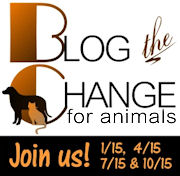
All of my previous Blog the Change posts have been about companion animal rescue efforts or campaigns, which makes a lot of sense for a dog blogger. And, of course, these are always extremely worthy recipients of donations, awareness, and volunteer efforts.
For this instalment, however, I’d like to change the focus.
Say your cat gets a hold of a bird in the yard. Say your dog goes after a porcupine or rabbit or skunk at the off-leash park. What if, after investigating a loud thud against the window, you find a dazed bird? What happens if a fawn is orphaned by poachers or some young goslings are orphaned by traffic? What if a family of foxes decide under your deck is their new home?
You might know to take your pets to the vet after wildlife encounters or even know pet first aid, but what about the other party to those situations – the wildlife? Do you know what to do with them?
Chances are there’s a wildlife hospital operating in your area for these very reasons: to help sick and injured wildlife as a result of human interaction.
Just north of Calgary you will find the Alberta Institute for Wildlife Conservation (www.aiwc.ca).
AIWC was founded in 1993 and is an ABVMA-certified wildlife hospital and trauma centre. AIWC treats and rehabilitates native wildlife injured or orphaned as a result of interactions with people.
AIWC operates in conjunction with Alberta Fish & Wildlife, the City of Calgary, and several local veterinary clinics who take after-hours patients until they can make their way to the centre.
In addition to providing care and treatment, AIWC is also a resource for information – found a bird in your yard unable to fly and not sure whether it needs intervention or is just a baby fledgling bird? You can call them and they can help out over the phone or send a rescue driver your way.
And if you’d like them to attend your school, community group, or event and present and educate on local wildlife, they do that, too (and have education ambassadors to bring along with them!).
AIWC also provides Wildlife Conflict Solutions, providing a humane, non-lethal, and permanent solution to resolve conflicts you may be experiencing with wildlife on your property.
AIWC isn’t the only wildlife centre operating in the area, either.
In southern Alberta, there is also the Calgary Wildlife Rehabilitation Society, the Cochrane Ecological Institute, and the Alberta Birds of Prey Foundation, among others.
If you’re in Edmonton, there is the Wildlife Rehabilitation Society of Edmonton.
Vancouver? See the Wildlife Rescue Association in Burnaby.
Saskatoon? Check out the Wildlife Rehabilitation Society of Saskatchewan.
Manitoba? There’s the Prairie Wildlife Rehabilitation Centre.
Toronto? Try the Toronto Wildlife Centre.
New Brunswick? Contact the Atlantic Wildlife Institute.
Those are just to name a few. There are centres like this operating all over the world to help local wildlife. Google [your location] + wildlife rescue and I’d be surprised if you didn’t get more than one nearby institution doing this important work.
Because it IS important.

The vast majority of patients at AIWC are birds. Here you have a magpie, an evening grosbeak, and a blue bird
These animals are often harmed or orphaned by no fault of their own or of natural circumstance, and the continual expansion of urban areas, agriculture development, and other industries make human-wildlife interactions inevitably more common.
And it’s not just us; it’s our pets, too. Environment Canada reported in October 2013 that domestic cats are the number one killer of song birds – just another reason to keep those kitties indoors! (The Oatmeal also did this awesome infographic on just how much wildlife our cats kill.)
And we all know dogs with a keen interest in rabbits, porcupines, squirrels – you name it. Sometimes those dogs get lucky.
These wildlife centres run on donations and volunteer support to help mitigate some of that impact and give some of those animals a second chance.
Just like any other conservation effort, wildlife rehabilitation is good for everyone, maintaining as much of our natural ecosystems as possible.
Now for your mission:
Make note of the nearest wildlife rescue or hospital and their contact information. Hopefully you’ll never need it, but it might be useful one day.
Find them online and on social media. Like their pages and spread their information – if you don’t know much about them, chances are others don’t either.
And, if you’ve got time or resources to spare, see what they need and how you can give.
Like any charity or non-profit, wildlife institutes are sustained by funds, time and supplies graciously donated by their supporters. See what they’ve got for ongoing fundraising campaigns (animal adoptions make great gifts for those hard to buy for people in your life!) and supplies wish lists.
And if you’d like to see more adorable patient photos from the Alberta Institute for Wildlife Conservation like the ones I’ve shared here, go like their Facebook page here. The person behind the camera for many of the photos there and the ones you’ve seen here may already be familiar to you ;).
Once you’ve completed your mission, go visit the Blog the Change for Animals blog hop and check out what everyone else is writing about.

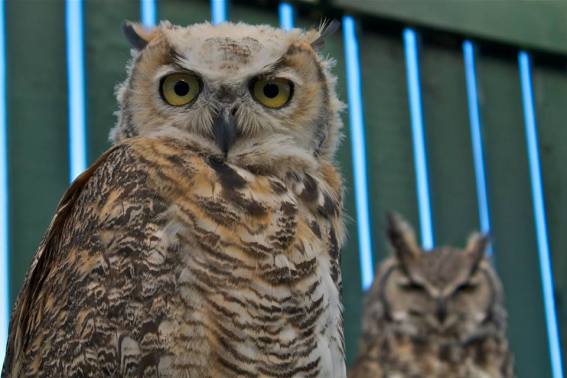

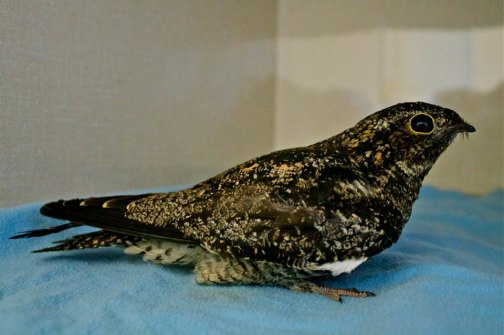
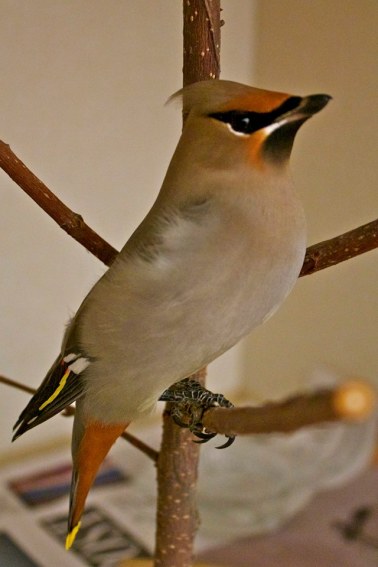
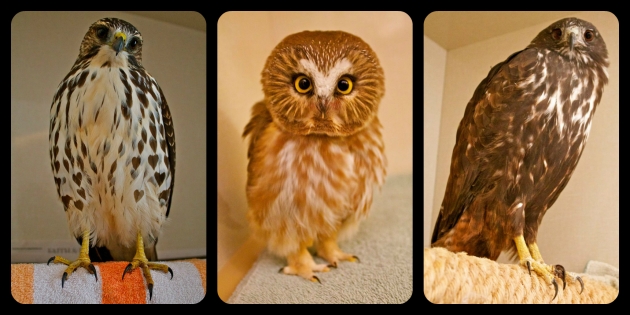


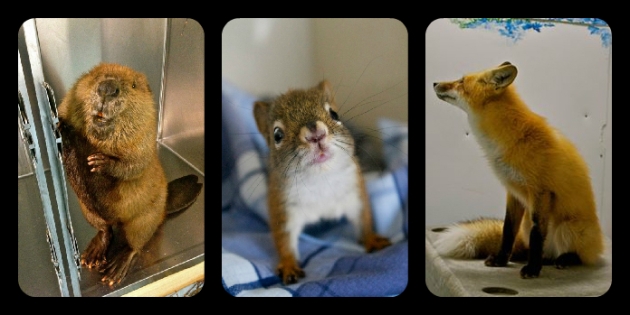









Good message. I remember a few years back, a big crow got caught in our gate opener. He was hanging upside down freaking out. I had NO idea who to call. Luckily my vet had the number of a bird rescue who came straight away, but it taught me a lesson about being prepared and also to appreciate all of the specialty/ wildlife rescues out there that do such great work.
Glad the little guy got help!
I seriously love your post. We live a short drive away from our state’s conservation department where they offer services like you describe. We’re worked with them a number of times when we’ve had injured wildlife on our farm. Gorgeous photographs!
I know a woman in Utah that does bird rehab. But then she got given a bear, a deer and a fox. She works with the local wildlife resource division. It’s such an important job.
Yeah, the cause can definitely snowball really quick. I remember reading somewhere about AIWC that something like less than 1% of animals who need help from human interactions make it to a wildlife centre. (Not an exact figure, I just remember a shockingly, depressingly low number.)
I don’t think there’s anything cuter than that porcupine…unless it’s the squirrel….or the beaver…. Great post. As you note, it’s important to know who to call. Recently we had a very ill woodchuck huddled up against our garage. It was very late at night, so we called the police and asked who to call but they said no one would respond for a woodchuck. We didn’t know if the woodchuck was ill or rabid or what, so we didn’t dare approach. The next morning he was still there, dead. We were so sad, and feel bad that we couldn’t help. Maybe he was old and it was his time. I have no idea.
Peggy, put North Country Wild Care in your contacts for our area. I found them through a quick search when we had our sick porcupine visit.
Too bad the police couldn’t point you in the right direction! Here, if people call the city general help line or animal and bylaw, they will get given the number of AIWC or Calgary Wildlife. It’s good that they’re all working together!
What a great post today. We don’t get many wild animals but there are deer and coyotes. We have a couple of places that can take injured animals but it’s very limited. Thanks for pointing out the need to keep a number handy, you just never know when you’ll need it.
Wildlife rescue is a wonderful thing to focus on! Where we are, we mostly see problems with raccoons and feral cats, but I should check out our local organizations.
Oh yes – they’ll help any native species. Here, people view coyotes, magpies, and beavers all pests, but they’re also important parts of the natural ecosystem, so will be helped with the same efforts as a cute fawn or majestic eagle. I’m willing to bet the same is the case for racoons in your area (we don’t have racoons here).
Thank you so much for branching out beyond the dog world! We bloggers so often preach to the choir during Blog the Change but this post is so useful and poignant to pet lovers and just plain animal lovers alike. Heck, even if you don’t like animals or you just want somebody to remove a particularly pesty one from your yard (we have a bear who likes to drink beer from my neighbor’s unattended coolers) these are the people you want to call!
For the record, we have our local wildlife rehabilitation network’s number on a fridge magnet. I’ve only ever used it to help a porcupine who had been hit by a car out of her misery. I like our bear. 🙂
Thanks for Blogging the Change!
Kim C.
BTC4animals.com
ThisOneWildLife.com
It’s certainly the case that those out walking with their dogs regularly also encounter wildlife more regularly, so we should know what to do or who to call if needed!
I went and checked out some bear posts on your blog – love the videos! What an awesome guest to have! So cool!
Great post! The pics are all so amazing! Even living in “the big city” like we do, there’s still a lot of wildlife here. (Not so much at our new house, but at our last house, which was close to a system of canyons we had bunnies, squirrels, coyotes, racoons, even a bobcat once!) I know we have a wildlife rescue group here that you can call – I’ve seen them driving around with the “live wildlife transport” banner up on their car – but I don’t know the name or number. Going to figure that out in case we need it one of these days!
Yep, we’re in the middle of the suburbs, but I’ve seen a deer walking home from work, several coyotes walking the dogs, tonnes of bunnies and quail, and magpies love to bug the dogs in the yard. Sure, they may be “urban” wildlife in that they’ve adapted to live in our developments, but they’re still wild animals, and I think they’re often overlooked. People prefer to think of moose and bears in the mountains when they think of wildlife in need of rescue.
Great article. We’re in the heart of the city so we don’t see much wildlife, except maybe oppossums and raccoons. The peeps went upstate last weekend and saw real deer for the first time in their lives.
This is a great point! Last year we had a sick fox in my neighbor’s yard. I called my vet, the local nature center and a Wildlife Rescue group, but none of them were able to deal with foxes. It took several phone calls and over 30 minutes to find the right number to call. Sadly, they were unavailable at the time. In the meantime, the neighbors feared the fox was rabid and called the police. The police waited a while for me to get a hold of someone (without success) and made the decision to put the fox down. It was a sad situation.
That is sad – and it’s hard. The rescues rely on volunteers being available just like a dog rescue does, and sometimes it’s just not possible. But at least the fox wasn’t left to suffer.
Excellent post! A good reminder to support these organizations. We have a wildlife rehab facility not too far from here and I have attended several of their presentations. They do excellent work. Unfortunately what sometimes happens is that people will take in these injured animals instead of taking them to a wildlife rehab facility. They make a pet out of them and it usually doesn’t end well.
Yes! That is the worst!
People are also fond of kidnapping baby animals, thinking they’ve been abandoned. Happens with fledgling baby birds all the time – leave it there! It’s just learning to fly!
Or they’ll take it in, keep it for a couple days before realizing they can’t take proper care, and then bring it to the centre in even worse shape, stressed and malnourished. (No, you can’t feed a baby bunny 2% milk from the grocery store – it’s cow’s milk, not bunny milk!)
Great post! And I absolutely love all the wildlife photos to!
Thanks so much for coming by my blog 🙂
((Husky hugz))
“Love is being owned by a husky”
Thank you for this reminder. We live right on the ravine and I have already seen quite a few signs of wildlife around our neighbourhood, from tracks in the snow to other less pretty things. We’ve even caught sight of a porcupine on several occasions. I have yet to look up the local wildlife resources but I do agree this is important information to have, just in case. The last thing I want to be doing in an emergency is relying on my quick Googling skills. I’ve been there and it isn’t fun.
The Wildlife Rehabilitation Society of Edmonton is an awesome outfit! I love their photos and stories on Facebook. I recommend a follow.
This is great information to have. And it is different calling in someone who deals with wildlife vs animal control. In our area when AC is called in the animal in question is disposed of.
We had a squirrel find it’s way into our attic a couple years back (it’s uncanny how much like a hand their little paw looks like when you see it reaching out of your house.) We got a live trap and hubby rigged it up to the house. I never put pictures or the story up on our blog because in CT if you trap an animal like a squirrel you are supposed to kill it.
Of course I was adamantly opposed to this, so Hubby took the squirrel for a very long ride and dropped him off. I felt bad doing that as well as squirrels are territorial and he might not be accepted by other squirrels but I couldn’t outright kill him.
I will make sure I find the nearest wildlife rehab facility and keep their number handy.
Yes, a huge difference between wildlife rehab and pest control, too. The wildlife centre will rehome, say a family of skunks, and ensure they’ll relocated to a good place away from humans, and make recommendations to ensure a new family doesn’t move right in. But animal control or a pest control company will not likely be so kind. Or as cheap.
Love your story about the squirrel! So happy to hear you gave the little guy a second chance!
Thanks for the wonderful post, facts, and photographs. “You’re the top!” I love that I met you on Be the Change for Animals.
Reblogged this on Dog Leader Mysteries and commented:
Such a fascinating, thoughtful and detailed piece of writing with great photographs of wildlife, and a healthy reminder that we humans keep moving in on homelands of wild creatures, all over the globe. Please read Back Alley Soapbox. I love this blog. Not only is this a Blog Paws member, but this post is another four times a year, “Be the Change for Animals” advocate’s voice, which I hope my readers will not only enjoy, but share too. Thanks, Deborah
Pingback: Monday Mischief 19: Moses Meets a Porcupine | Back Alley Soapbox
Love that porcupine photo! Catchy and wonderfully written
This is an interesting article on how to care wild life animals. Rehabilitation begins when an animal is found and reported to a wildlife rehabilitator, or seized from the illegal wildlife trade or a poacher. The rehabilitator will examine the animal to determine the extent of the injury and the probability of successful rehabilitation. If it appears that the animal can make a sufficient recovery to be able to return to the wild, the animal will be fed, nurtured, reconditioned, medicated, operated on, or otherwise treated as necessary. Thanks for sharing such a wonderful article. true life stories